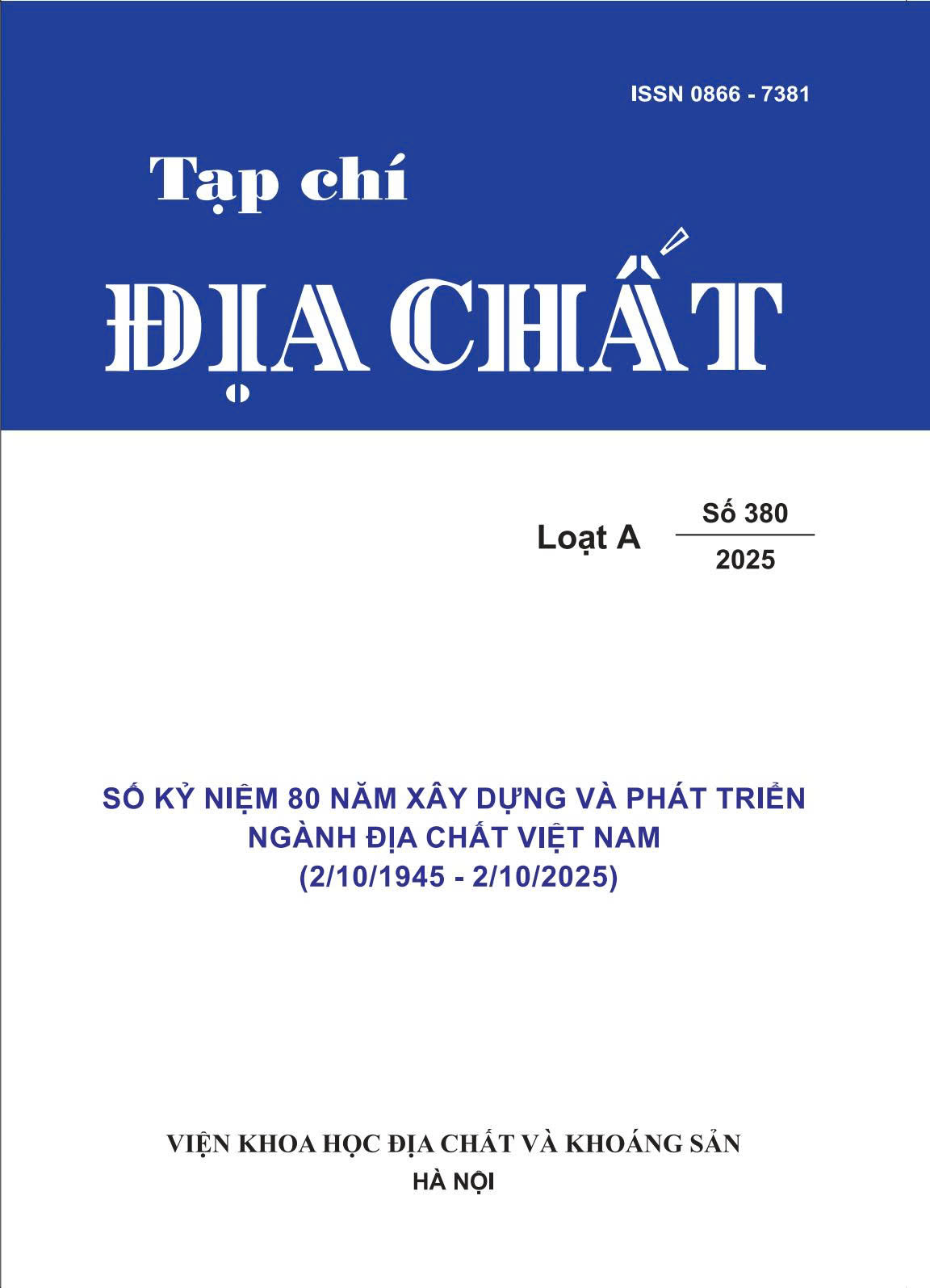Abstract
Ham Yen-Ba Be area is located in a region with complex geological structure, composed of many different geological objects, strongly weathered rocks, many areas with weathering crusts of quite large thickness. Research results show that in the soil and weathering crust of the area, there is a high concentration and accumulation of many significant elements such as Pb, Zn, Cu, Sn, REE, Sb, As, Ag, W, ... in many different geological objects. In which, the fine-grained terrigenous formation is closely related to REE, Sn, Pb, Zn; in medium to coarse-grained terrigenous formation related to Pb, Zn, Sn, Cu; carbonate terrigenous formation related to Pb, Sn, REE, Cu, W, Sb, As, Be, Ni, Li, Ta, B, Bi, ..; siliceous terrigenous formation related to Sn, Cu, Ba, V, Pb, REE; Acidic intrusive formations are related to REE, Sn, Mo, Pb, Zn, Co, Nb, V, Be, Bi, Ba, Ti, As, ...; in mafic intrusive formations are the elements Sb, Co, Cu, Ni, Ti, V, Sr, B. In each of the above objects, depending on the age (formation, complex), the common types of elements and their content are different. These are signs of the possibility of the existence of original ore hidden deep below or possibly accumulated in the weathering crusts of the above formations. The research results also identified a fairly close relationship between the dispersion rings and highly accumulated elements in the weathering crust with factors such as lithology-stratigraphy, magma, faults, folds, topography, geomorphology, and distribution characteristics of parent ores in the area. Based on the criteria of soil geochemical characteristics (dispersion rings), weathering crust geochemistry (level of accumulation compared to the entire structure) and premises (lithology-stratigraphy, magma, structure, topography-geomorphology), signs (ore exposure points, sea change zones, ...), the research area can be divided into areas with different levels of prospectivity such as: Very promising area (with 4 areas 1A, 2A, 3A, 4A), Prospective area (with 7 areas 1B, 2B, 3B, 4B, 5B, 6B, 7B); Areas with unclear prospects (8 areas 1C, 2C, 3C, 4C, 5C, 6C, 7C, 8C). The studies obtained are the basis for delimiting areas that need to be further investigated, evaluated and explored for mineral reserves in the future.

